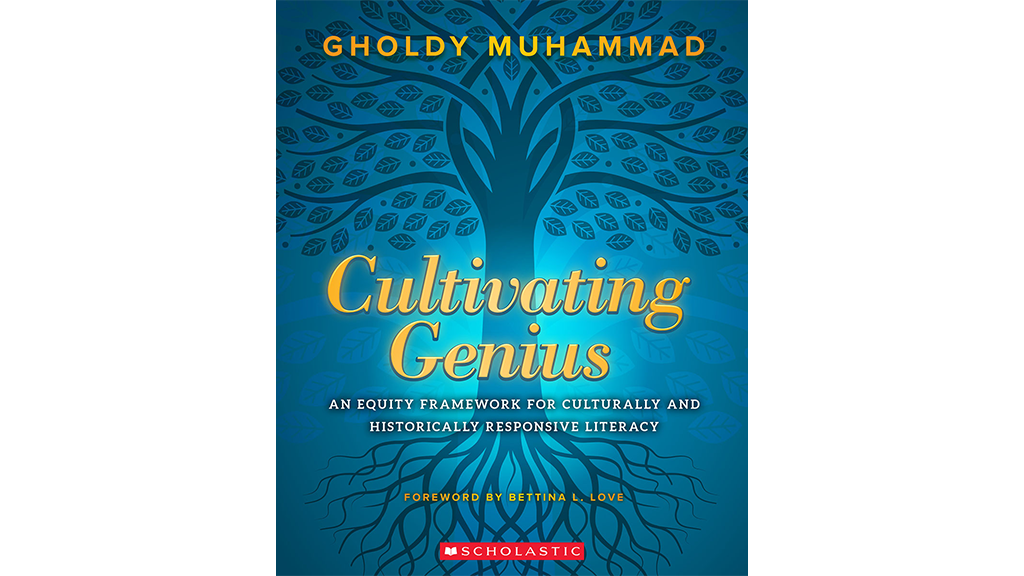
PHOTO CREDIT: SCHOLASTIC
Gholdy Muhammad, associate professor of Language and Literacy at Georgia State University and director of the Urban Literacy Collaborative and Clinic, has written a powerful new framework for literacy education called Historically Responsive Literacy (HRL). Written under the theoretical framework of culturally relevant education, this four-layered equity framework “is a universal teaching and learning model that helps teachers cultivate the genius within students and within themselves and teach in ways that create space for mutual empowerment.” Muhammad begins by defining historical literacy for Black Americans in the 1800s and then offers an inspirational four-layered equity framework for rethinking literacy for Black students today. The learning goals she develops are 1) identity development 2) skill development 3) intellectual development and 4) criticality. Muhammad proudly offers this book for people of color, written by people of color, and growing from the legacy of the 19th century Black literary agents who forged a path for educational achievement.
Ten central literacy lessons emerged from her study of Black literary societies. These lessons should reframe today’s literacy education instead of our current “one-size-fits-all” models that are ineffective for students of color. Some of the lessons include reading and writing in response to social events that require social action, which motivates readers to choose topics that personally speak to them or that affect their lives. Literacy instruction should be a shared experience with debates and public sharing of thought that challenges one’s personal beliefs and allows for diverse perspectives and diverse genres. These 10 lessons were and are meant for “improvement and advancement in mental development” but also “cultivated the mind of readers so that they would be in higher positions to advocate for their rights and create the capacity to provide a better future for Black people throughout the country.”
Within each chapter, Muhammad discusses questions for further consideration for teachers and preservice teachers, as well as for principals and school leaders. She uses many primary sources and quotes from those early literary agents to strengthen her research and explanations of HRL. The first half of the book is strong in theory. It is when she gives suggestions for teachers as they begin identity work with students of color and when she gives brief exercises and activities to try in the classroom that the book declines in strength.
Another major area lacking guidance is how teachers should go about self-exploration and self-reflection when beginning this work. Muhammad calls for teachers to first do the work on themselves but does not say how to do this past a few questions for thought.
Is this a worthwhile educational read? Yes. Muhammad calls for those who write state standards, district curriculum, and state tests to read and examine the four goals of HRL in hopes of rethinking and reframing the standards and requirements we ask of students today. Schools that need help identifying and motivating students of color and those who come from other cultures would greatly benefit from this book. Schools that are looking to implement criticality, which leads to service learning and social justice, would find the research and theory very helpful. Professional learning communities could use the “questions for further consideration” as small group discussions to begin the conversation needed to implement HRL.
Patti Brooks (pbrooks9@uncc.edu) is a doctoral candidate at The University of North Carolina at Charlotte.

Share this content